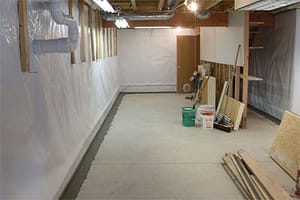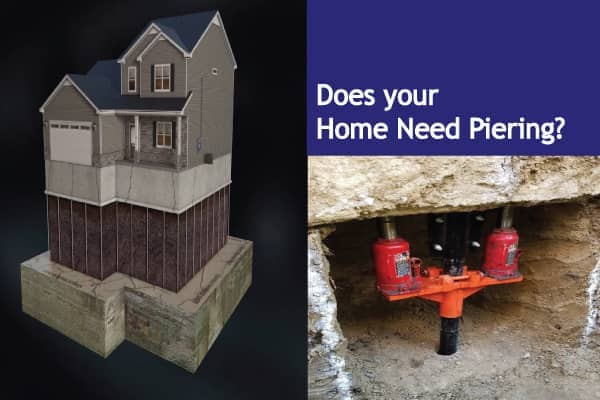Best Basement Waterproofing Fundamentals Explained
Best Basement Waterproofing Fundamentals Explained
Blog Article
All about Best Basement Waterproofing
Table of ContentsWhat Does Best Basement Waterproofing Do?The Definitive Guide for Best Basement WaterproofingSome Known Incorrect Statements About Best Basement Waterproofing Facts About Best Basement Waterproofing RevealedFacts About Best Basement Waterproofing Uncovered
AdvantaClean's skilled experts and professionals will find the water resource. If wall surface or piece fractures are present, we will infuse polyurethane and epoxies into the fractures and secure the compromise, preventing further moisture from entering.Appropriate grading around the home to route moisture away from the structure. Setting up, fixing, or cleansing rain gutters and downspouts. Inside or external waterproofing with filler, sealant, and/or water resistant paint. Setting up cellar air flow systems, conditioning systems, or cellar dehumidifier systems to obtain water out of your cellar. Choosing AdvantaClean's cellar waterproofing solutions is an effective method to treat dampness and protect against mold and mildew from endangering the framework of your home and the health and wellness of your family members.
If there's condensation on the exterior of the foil, you have high moisture in your cellar. Fix it with a mobile room dehumidifier or a whole-house humidifier system instead of waterproofing items. If the aluminum foil has condensation on the within surface (following to the wall), the soil around your home may be normally damp from a high water table or bad dirt water drainage.
You can waterproof simply your interior walls, which might fix the issue. Once they dry, they stick completely to concrete and stonework wall surfaces.
The 9-Minute Rule for Best Basement Waterproofing
Concrete water-proof coatings can not be used to formerly painted surfaces; examine the label. Known as densifiers, they are appropriate just for walls that have not been painted or sealed.
You comb, roll, or spray it on much even more thickly one gallon covers just 75 square feet, not the 300 square feet regular with standard paint. Waterproof paint is fine for DIY application. You can apply it over painted surfaces, and paint over it once it's treated (one gallon costs $37).
It can set you back $10,000 to $15,000, depending on the work required (Best Basement Waterproofing). Exterior waterproofing involves excavating all around the residence to the full depth of the structure walls, then setting up a water-proof finishing or membrane layer covered by water drainage panels.
Things about Best Basement Waterproofing
A basement without waterproofing is kind of like that. Your basement doesn't desire to go via a rainstorm without correct security simply as much as you don't want to.

Outside waterproofing is a waterproofing technique that involves sealing your home from the exterior. It's kind of like a moat around a castle. It best site includes digging a trench around your entire home down to the foundation (about 8 to 10 feet down). The foundation wall surfaces are then cleaned up, sealed, and covered with a water resistant membrane or sealant.

Little Known Questions About Best Basement Waterproofing.
It's a more engaged procedure that needs excavating up your backyard, which is pricey and lengthy. Exterior waterproofing entails eliminating everything bordering your home, including patios, driveways, walkways, landscape design, air conditioning devices, decks, and more. If any of the job was done incorrectly and water is still entering your cellar, there isn't much you can do to fix or repair it.
Interior cellar waterproofing involves waterproofing from the within. Any type of water that leakages into your cellar is redirected before it touches your floor. It's type of like putting on a raincoat under your clothing. It involves 2 things: a water drainage track and a sump pump. It functions by sealing the within your cellar wall surfaces and floors so water that attempts to get in is channeled out with a sump pump.
It's an efficient approach to waterproof your basement. The disadvantage of indoor basement waterproofing mainly pertains to the installation process. This approach requires kept things, furnishings, and integrated shelving or cupboards to be moved from touching visit their website the basement walls. And throughout installation, your basement can't be utilized. The largest difference between both methods is this: Exterior waterproofing is a preventative option and indoor waterproofing is a corrective option.
What Does Best Basement Waterproofing Mean?
In final thought, exterior and interior cellar waterproofing are both efficient techniques of shielding your home from water damages. Outside waterproofing creates a barrier that protects against water from entering your home, while interior waterproofing redirects water that does enter your home. And it's essential to keep in mind that outside waterproofing is a costly and turbulent setup procedure when contrasted to indoor waterproofing.
Whichever method you choose, make sure you choose a trusted and credible contractor for the job. If you have any concerns about cellar waterproofing, please get to out to us.
You can fill up out our form right here. Best Basement Waterproofing, start a chat in the lower right-hand edge, or call us at 1-800-827-0702
Report this page